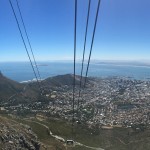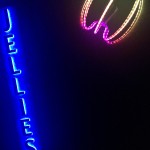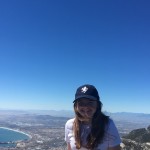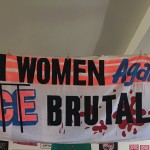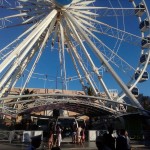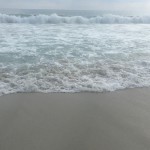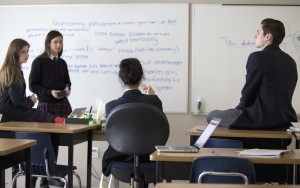 Aujourd’hui, nous allons vous parler de la confiture.
Aujourd’hui, nous allons vous parler de la confiture.
Et oui! La confiture… Plus spécifiquement, une expérience qui a été conduite par une Américaine nommée Sheena Iyengar. Son expérience s’est déroulée comme suit : elle a installé deux présentoirs différents de confitures dans un supermarché en Californie. Le premier étalage offrait six choix de confiture et l’autre en avait vingt-quatre. Le but de l’expérience était de déterminer si le nombre de confitures offertes aux clients changeait le nombre de confiture vendue.
Comme résultat, Mme Iyengar a constaté que les gens qui sont allés au présentoir contenant les six choix de confiture ont acheté la confiture 30 % du temps, tandis que, seulement 3 % des clients ont acheté la confiture provenant du présentoir qui contenait vingt-quatre saveurs. Ceci s’explique simplement : lorsqu’on est donné trop de choix, notre cerveau devient trop rempli d’information et nous paralyse!
Cette expérience est expliquée en détail dans le livre Blink de Malcolm Gladwell. Dans ce livre, il parle de ce phénomène qu’il nomme « Paralyse d’analyse. »
Gladwell énonce que notre génération croit que la qualité de notre travail sera améliorée si nous prenons notre temps et recevons plus d’informations au sujet d’une certaine situation. Par contre, ceci est totalement FAUX. Plutôt, les jugements instantanés peuvent parfois être beaucoup mieux.
Alors pourquoi est-ce que nous avons choisi de partager ceci avec vous ?
Parce que vous êtes tous concernés par cette théorie de la « paralyse d’analyse ». Que vous soyez en Middle School avec les opportunités variées dans les sports et les clubs offerts, en neuvième année avec l’idée d’un échange scolaire, en dixième en train de remplir les applications pour une position de Grad pride pour l’an prochain ou, même encore, en onzième avec la décision troublante de choisir entre Pre-U vs le Cégep, vous êtes TOUS dans une situation où vous devez faire des choix et prendre une décision. Alors que faire? Prendre son temps, analyser tous les faits, les pours et les contres? Ou écouter ses instincts? Ce qu’on espère avoir prouvé avec l’exemple de la confiture c’est que, quand nous prenons ces décisions, il ne faut pas trop se poser de questions. Au lieu de rechercher infiniment des informations, de vous remettre en question et de vous questionner si vous êtes assez bon ou pas (en obsédant sur votre SAT ou votre moyenne) pourquoi, plutôt, ne pas vous poser simplement une question : qu’est-ce que je souhaite faire ?
Ceci pourrait aussi vous aider dans vos travaux. Quand un professeur vous donne un projet, ne le bombardez pas avec toutes vos questions jusqu’à la taille des lettres et
« calmez-vous ! » Ne limitez pas votre créativité avec des contraintes de style ou de forme. Laissez-vous aller ! En fait, le livre Blink propose même l’extrême et suggère que les médecins ne devraient rien savoir au sujet de leurs patients afin d’avoir un esprit ouvert, des idées nouvelles sans être influencés par des informations inutiles et préjudiciables.
Bon! Un peu extrême… On ne sait pas si cela est un bon choix! Enfin si vous ne voulez pas suivre les conseils de M. Gladwell, nous pouvons vous dire qu’au moins, cela vous aidera beaucoup la prochaine fois que vous achèterez de la confiture… – Abby Shine ’17 and Laurence Troquet ’17

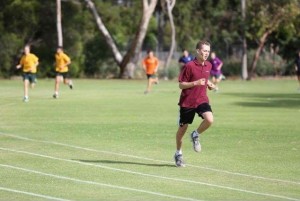
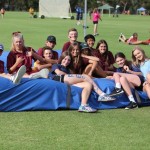
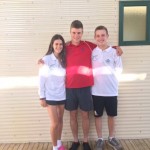
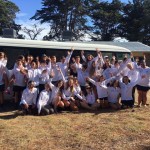
 Aujourd’hui, nous allons vous parler de la confiture.
Aujourd’hui, nous allons vous parler de la confiture.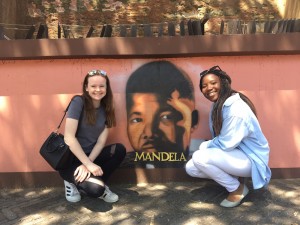 I have been in Johannesburg for a little over a month and this exchange is going by so fast! I wish I could stay longer but sadly I only have two weeks left. I have experienced so many new things and discovered the history of their beautiful country.
I have been in Johannesburg for a little over a month and this exchange is going by so fast! I wish I could stay longer but sadly I only have two weeks left. I have experienced so many new things and discovered the history of their beautiful country.